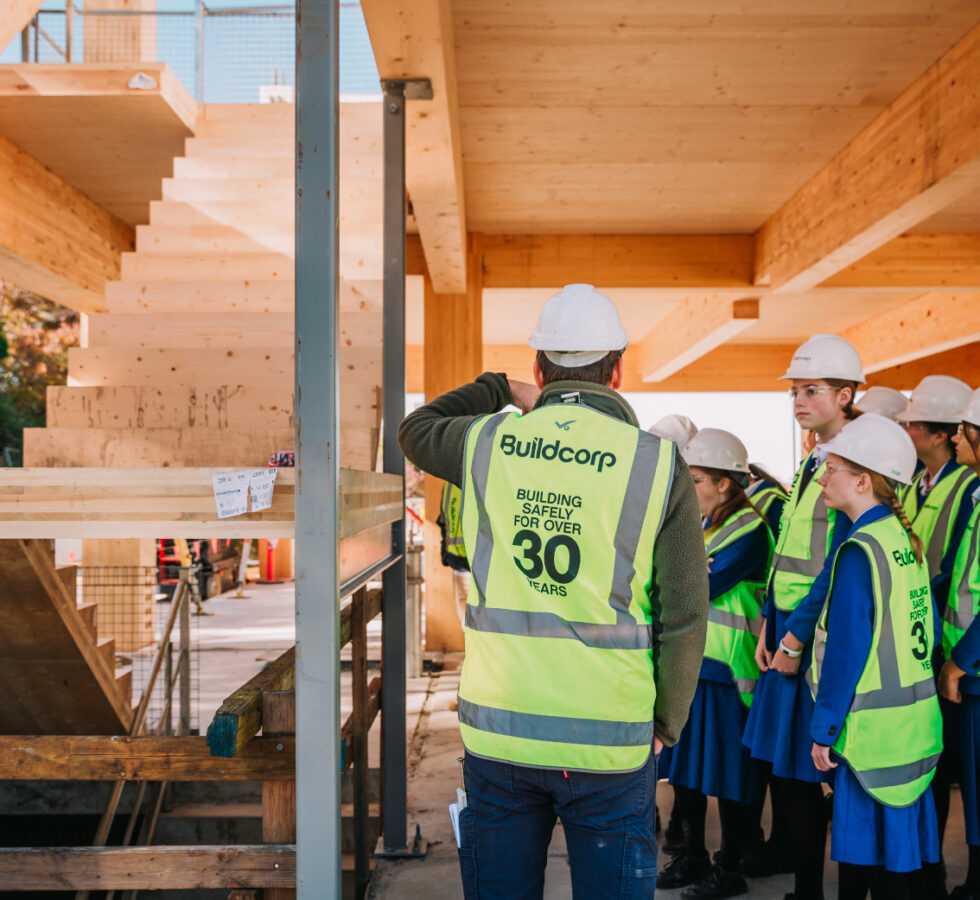320 Adelaide Street Repositioning, Brisbane
320 Adelaide Street
Brisbane City QLD 4000
320 Adelaide Street
Brisbane City QLD 4000
Buildcorp delivered a transformative façade replacement and building upgrade at 320 Adelaide Street, revitalising the 12-storey CBD tower to meet modern safety standards and attract future tenants.
Currently occupied by Christie Spaces, 320 Adelaide Street was initially erected in 1959. In the 1990s, the building underwent a façade upgrade, which involved the installation of a synthetic sandstone art deco exterior known as “Futuretec” cladding. The Futuretec cladding, measuring between 400mm and 1m in thickness, covered the 5,000m²/12-storey façade of the building. This cladding material is now considered non-compliant with current fire safety regulations. Our client saw this as an opportunity to enhance the design to attract new tenants.
To commence the project, the Buildcorp team was initially engaged in an Early Contractor Involvement (ECI) phase to assess and mitigate potential risks and assist with design. The primary focus of the design is replacing the façade, renovating the lobby, replacing the original copper roof and major base building services upgrades including MSB and fire services.
As an alternative to the proposed Kingspan cladding from the UK, which was incompatible with the building’s existing structural and design issues and had a lead time of over 16 weeks, a custom-made local product was suggested. The project team collaborated with a Brisbane based manufacturer to create specially tailored aluminium cladding panels that were suitable for the building. This approach allowed for regular site visits to inspect the manufacturing processes, ensuring quality control and mitigating lead time issues. The resulting product aligned with the building’s design goals and provided solutions for the various issues identified during the ECI investigations.
Another significant challenge involved determining the safest method for removing the existing cladding. The design team conducted on-site testing, investigations and product trials to assess demolition techniques and ensure safe removal. Ultimately, it was determined that a stationary and enclosed space would be used to contain the cladding during removal, preventing the miniscule polystyrene debris from being released into the environment.
Buildcorp delivered a transformative façade replacement and building upgrade at 320 Adelaide Street, revitalising the 12-storey CBD tower to meet modern safety standards and attract future tenants.
Send us a message below and one of our team members will be in touch.
